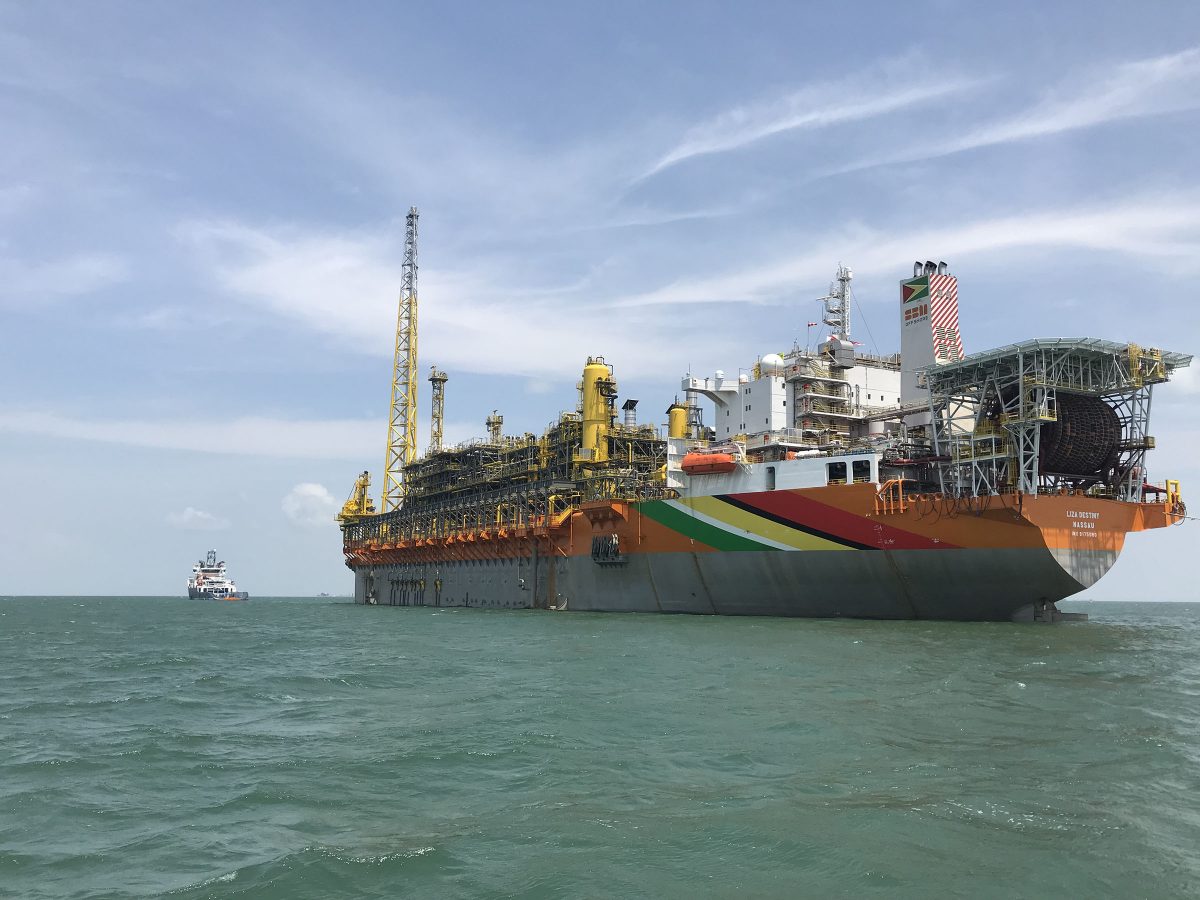Guyana has lifted its second one-million barrel cargo of crude oil entitlement from ongoing offshore production and the oil tanker Sonangol Namibe departed these shores yesterday afternoon.
The entire transfer process, from entry of the vessel into Guyana’s waters to the completion of the lift, was expected to take between one and three days, which includes the process for testing and transferring of the one million barrels of oil from the Exxon’s Lisa Destiny FPSO to the tanker, which arrived on Tuesday. The lifting process began on Wednesday.
Guyana is entitled to five lifts for this year. It is expected that each lift from Liza Destiny will be approximately 1,000,000 barrels as agreed to by government and Exxon and its partners.
Head of the Department of Energy (DE) Dr Mark Bynoe had last month said that the second lift was scheduled around this time and that government anticipated that it would earn less revenue than the US$55 million it received for the first lift, given the current market conditions.
Guyana opted not to hedge its five lifts of oil for 2020 but instead sell at current day Brent prices until it gets a substantive crude oil marketer to advise on future lifts.
Less money earned this year and the current global impact on the oil and gas sector are also expected to lower the projected 86% growth in Gross Domestic Product for this country, according to analysts and the DE said it is currently crunching its own numbers to see just how much this country will be affected.
“Production is currently between 85,000 and 90,000 barrels per day. We are aiming to reach (maximum) production by May 2020. Guyana’s next lift is projected for May 2020. The depression in oil prices will impact Guyana’s revenue since Guyana did not hedge but used a dated Brent approach. However, no one knows what this impact will be, but we continue to monitor the situation,” Bynoe had told the Stabroek News.
“No one knows exactly what the price will actually settle at. The DE is completing various scenario analyses on projected COVID-19 and price fluctuations,” Bynoe said.
But when he was asked to share excerpts of the department’s analysis about how much they believe this country would earn for 2020 Bynoe said that he would not but that the analyses was continuous. “No, we are not about to share our analyses, but we are doing various estimates,” he said.
The Brent crude price for December, when Guyana started production, was at a high of US$67.31 per barrel and in February, the average was US$56 per barrel. The figure dropped earlier in March and then slumped dramatically into the mid-US$30s after a row between Saudi Arabia and Russia.
By late March, oil futures settled under US$29 a barrel, down from US$61 at the start of the year, which Reuters said has cut new drilling and led producers to seek price cuts from suppliers. In early April it was even lower at US$20 per barrel.
Around the same time, Saudi Arabia, Russia, and key OPEC allies agreed to slash crude oil production, a move that was expected to boost prices and bring some relief to the already troubled market.

